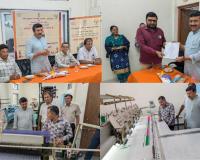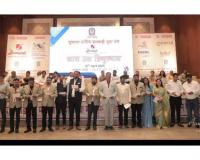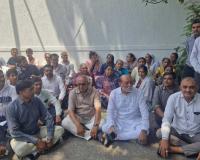Surat Industry Seeks Tariff Subsidy After US Announces Reciprocal Duty on Indian Exports

Surat – Following the announcement by US President Donald Trump of a 27 percent "reciprocal preferential tariff" on Indian imports, the Southern Gujarat Chamber of Commerce and Industry (SGCCI) has urged Union Minister of Commerce and Industry Piyush Goyal to provide tariff subsidies for the gems and jewellery and textile sectors. The chamber has also requested the government to prioritize the signing of a Free Trade Agreement (FTA) with the United States to protect key export industries.
The new tariff, effective from April 2, 2025, is expected to increase the cost of Indian exports to the United States, potentially impacting trade volumes. India’s exports to the US currently stand at $87.4 billion, with the gems and jewellery sector alone contributing ₹2.72 lakh crore. Additionally, the US accounts for 28 percent of India’s total textile exports.
SGCCI President Vijay Mewawala highlighted that South Gujarat serves as a major hub for both the gems and jewellery and textile industries. The newly imposed US tariffs could severely affect these sectors, posing a threat to thousands of jobs. In light of this, the chamber has urged the central government to introduce immediate tariff subsidies to help these industries remain competitive and to expedite the FTA negotiations with the US.
India has already proposed FTAs covering sectors such as gems and jewellery, textiles, automobiles, information technology, pharmaceuticals, and solar modules. On the other hand, the United States is pushing for FTAs focusing on advanced manufacturing, robotics, automobiles, and high-tech industries. A mutually agreeable trade pact could offer relief to Indian exporters while maintaining a balanced trade relationship between the two countries.
Commenting on the tariff’s potential impact on Surat’s textile industry, industry veteran Pramod Chaudhary said the effect would be minimal. He explained that very little of Surat’s textile production is directly exported to the United States. Most of it is geared towards the domestic market, with only 2 to 3 percent of production being exported, mainly to countries such as Bangladesh, Vietnam, Turkey, and parts of South America. These countries, in turn, supply garments to the US and Europe. He added that while some of these countries have seen tariffs neutralized, others face higher duties, thus insulating Surat’s textile producers from any significant disruption.
However, according to FOSTTA President Kailash Hakim, segments like garments and home furnishing textiles exported from Surat may still experience adverse effects. He noted that under the previous trade framework, the tariff was around 7 percent, which has now surged to 27 percent. This steep increase will make Indian textiles more expensive in the US market, potentially reducing demand. Hakim also pointed out that the frequent changes in trade regulations by the US government may be part of a broader strategy to boost domestic industries, but it puts Indian exporters, particularly those in Surat, at a disadvantage.
The SGCCI and local industry leaders are hopeful that swift policy interventions and trade negotiations by the Indian government will help cushion the impact of the new US tariffs and preserve the growth momentum in the region’s key industries.






